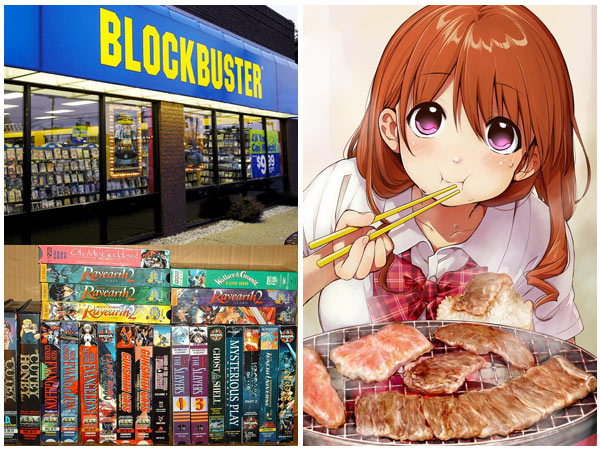
I’ve been an anime fan for a long time, long enough to remember attending the monthly anime club meetings at San Diego State University, surrounded by like-minded fans as we watched the newest episodes of City Hunter, Dirty Pair and Zeta Gundam. This was before anime had become a proper industry, and there were no commercially-licensed titles in existence yet…and no fansubs either, which meant we were watching in Japanese, with a short sentence describing the plot (“Lum uses a ‘copy gun’ to make copies of Ataru, which gets out of hand pretty quickly”) in our newsletter if we were lucky. Over the next 30 years (ack! I shouldn’t have calculated that), anime rose in prominence around the world, then declined somewhat as the arrival of the Internet chipped away at the old business model of selling $600 laser-disc sets to fans. It’s fun to look back and see how things have changed over the years. The days of renting anime on VHS from your local Blockbuster are gone, are is the bulky VHS format itself. Also gone are watching aggressively edited-for-TV anime on Toonami or Fox Kids, with swimsuits digitally drawn on characters in a bath even though nothing was showing, and bizarre “cousins with benefits” plot-lines introduced for no reason.
Without a doubt, one of the best things about living in Japan is the food. There’s lots of amazing Japanese food here (surprise!), but cuisine from just about every other country in the world is available, too. While Americans might head to their local Mexican restaurant for a nice dinner, in Japan the most popular “ethnic” food is Indian, like delicious keema curry and naan bread washed down with a lassi yogurt drink. Another popular category of food to the Japanese is Korean, and going out for Korean BBQ is roughly the same here as a New Yorker going for bagels and matzah ball soup. (The Japanese have also embraced Korea’s spicy pickled cabbage called kimchee, something which Koreans hate, saying that Japan is “stealing” their national food.) One area of food culture that doesn’t feel “ethnic” here are Chinese foods like fried rice, yakisoba (Japan’s version of chow mein) and gyoza dumplings, which are so closely interwoven with Japanese cuisine they’re almost considered part of the same group. If you’re interested in learning more about foods the Japanese eat, browse our cookbook sections or read the Happy Cooking Graffiti manga we posted today!
One of the more popular products we sell are revolving subscriptions to popular magazines like Megami, Nyantype, Newtype and Dengeki G’s. These magazines are in Japanese, but have great visuals on every page, and free stuff like posters, figures and more for collectors. Interested in Japanese fashion and cosplay? We’ve got magazines for that. How about great monthly manga that deliver hundreds of pages of interesting stories every month? We have those items too. Best of all, it’s pay-as-you-go, so you never need to pre-pay for your subscription and can cancel any time. If you’re more of a Japanese snack person, don’t forget our Japanese Snack Subscription, a box of random Japanese snacks sent to you every month!
















